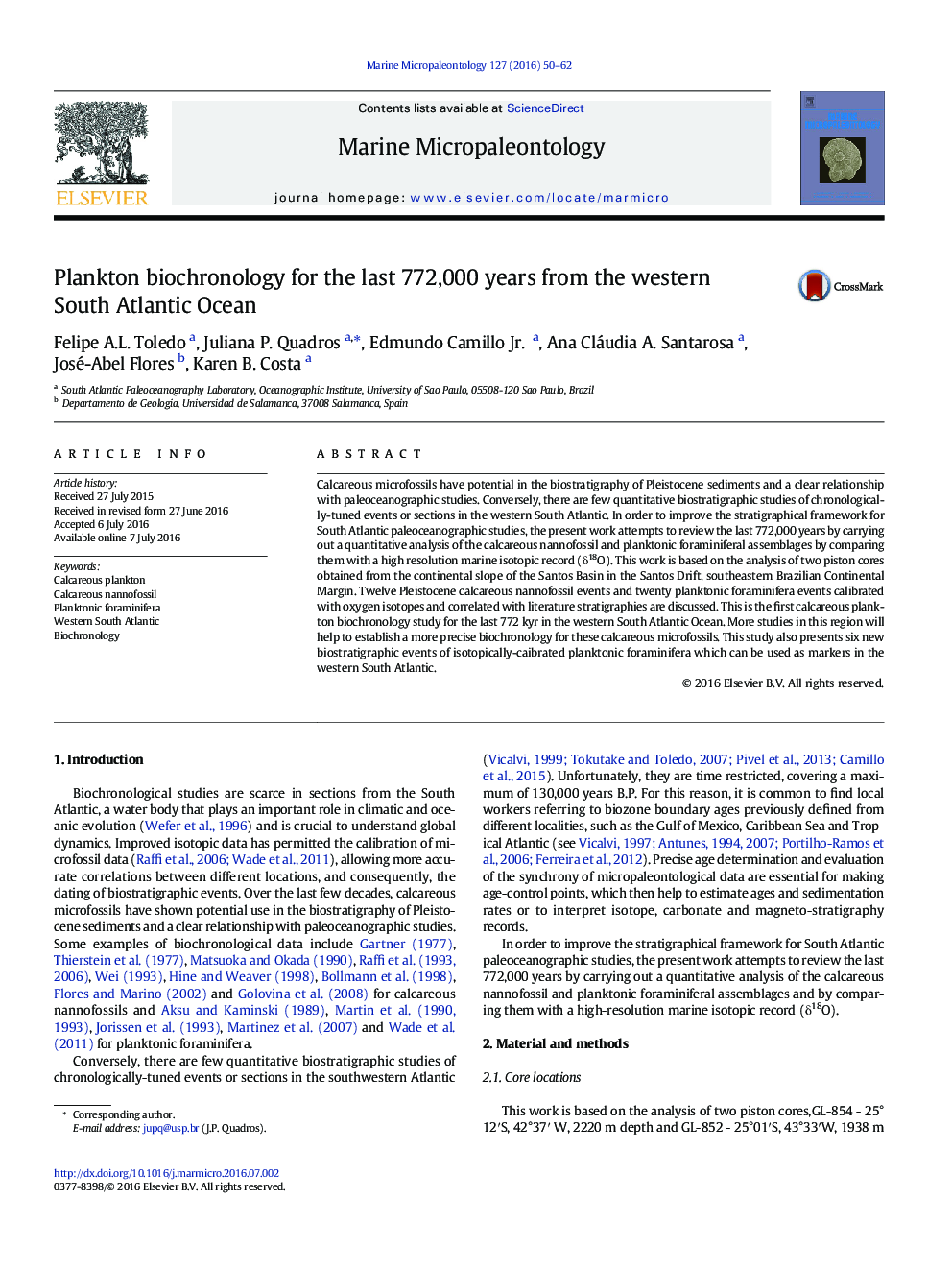| Article ID | Journal | Published Year | Pages | File Type |
|---|---|---|---|---|
| 4748745 | Marine Micropaleontology | 2016 | 13 Pages |
•High resolution quantitative records of the chief coccolithophorids and foraminifers•Useful biostratigraphic framework for tropical regions•Calcareous plankton bioevents calibrated with oxygen isotope record
Calcareous microfossils have potential in the biostratigraphy of Pleistocene sediments and a clear relationship with paleoceanographic studies. Conversely, there are few quantitative biostratigraphic studies of chronologically-tuned events or sections in the western South Atlantic. In order to improve the stratigraphical framework for South Atlantic paleoceanographic studies, the present work attempts to review the last 772,000 years by carrying out a quantitative analysis of the calcareous nannofossil and planktonic foraminiferal assemblages by comparing them with a high resolution marine isotopic record (δ18O). This work is based on the analysis of two piston cores obtained from the continental slope of the Santos Basin in the Santos Drift, southeastern Brazilian Continental Margin. Twelve Pleistocene calcareous nannofossil events and twenty planktonic foraminifera events calibrated with oxygen isotopes and correlated with literature stratigraphies are discussed. This is the first calcareous plankton biochronology study for the last 772 kyr in the western South Atlantic Ocean. More studies in this region will help to establish a more precise biochronology for these calcareous microfossils. This study also presents six new biostratigraphic events of isotopically-caibrated planktonic foraminifera which can be used as markers in the western South Atlantic.
